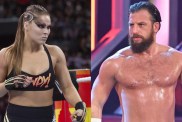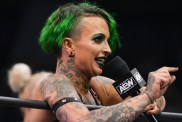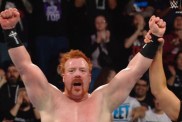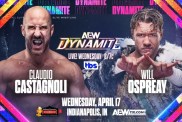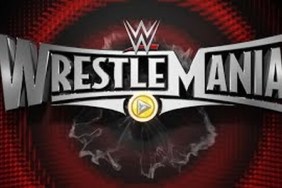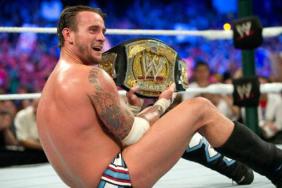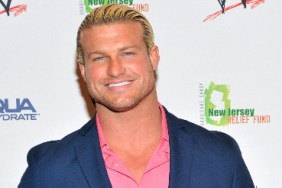Each week, WrestleZone columnist Michael Sullivan tackles an intriguing or controversial subject from the WrestleZone Forums.
From an initial forum post at http://forums.wrestlezone.com/showthread.php?t=261615.
I'd never thought about this before, but there's a generational gap among wrestling fans, at least in terms of how we define the word “jobber.” For many of who grew up watching wrestling in the '70s and '80s, jobbers were sacrificial lambs. Often these weren't even people who were on the regular roster, but rather local workers who were brought in specifically to lose (and in spectacularly one-sided fashion) to other wrestlers on the card. You could watch a year's worth of televised wrestling, and maybe, just maybe a jobber might win one match – an upset of such monumental proportions that it would immediately become an ongoing storyline over the next several weeks.
When I was younger, I only understood jobbers as the sort of people whom King Kong Bundy would fight five at a time (and then pin for a five count). They were the guys whom Bobby “The Brain” Heenan derided as “ham & eggers,” and the type of people WWE hired for Yokozuna to practice his Banzai Drop on so that he wouldn't land on Bret Hart's throat during a pay-per-view. But all of this changed during the Monday Night Wars, as WWE and WCW fought desperately to win 15-minute segments and draw ratings in prime time on syndicated cable networks. General audiences could no longer be expected to sit through numerous matches wherein the outcomes were completely predictable before the bell ever rang. Nowadays it's extremely rare to bring in an outside worker, even for a total squash match.
This model has reached the point where current WWE fans refer to former midcard and/or tag team champions like Zack Ryder, Evan Bourne, and Santino as “jobbers,” because they lose most of the time on WWE programming. In my mind, losing frequently doesn't make you a jobber – losing every time, for years at a time makes you a jobber. Of course, it takes more than just losing to make a wrestler an elite jobber.
A frequently discussed topic in the WrestleZone forums is the process of “selling.” I'm sure almost everyone on the forum agrees that when a wrestler performs any maneuver, the quality of the result is a combination of how well he does the move, and how well his opponent takes the move. Jack Swagger used to frequently unleash a great gutwrench powerbomb, but I've never looked at that move the same after the painful, drawn-out botch that resulted when Alex Riley didn't sell it properly. On the other hand, you can say what you will about the in-ring ability of the current crop of Divas, but I couldn't take my eyes off the recent program between AJ and Kaitlyn, in large part because of how bad-ass AJ made the Spear look.
But as entertaining as it is when Dolph Ziggler or Shawn Michaels bounces around the ring after a big move, neither would have made for the ideal jobber. Ziggler's cartoon physics bumps highlight his own athleticism (and that's not intended as a criticism). A jobber is there purely to enhance the profile of his opponent. I don't know that I'm qualified to speak to the greatest jobbers in history – my first wrestling memories are from 1984. But here's my list of my ten favorite jobbers, including my rationale behind their selections.
#10. Mario Mancini: The 1980s were a time when it was perfectly okay for professional wrestlers to look like guys who were too out of shape to play on your beer league softball team. There was something about the way Mancini screamed in pain that always, always tricked me into thinking he was legitimately injured.
#9. The Mulkey Brothers: You get a two-for-one with this tag team. The Mulkeys were great sellers – they made every opponent look powerful, and every finishing move look devastating. A decade before WCW began talking about Goldberg's win streak, the Mulkeys' run of consecutive losses ran up to 150. Even today, Mulkeymania is still going strong.
#8. Jamie Noble: Noble is a guy who ranks a bit lower because he actually held a Cruiserweight belt, but for much of his career he was strictly a jobber. In fact, his status as a jobber was used in a couple of storylines. In any case, Noble makes my list mostly thanks to his final match with Sheamus. Noble legitimately injured his shoulder or back near the end of the match, and still ended up taking an absolutely brutal-looking powerbomb on the floor. In terms of in-ring ability, Noble was a few steps above most jobbers. How many other guys on this list could have inspired a YouTube video showing off their top 100 moves?
#7. Screamin' Norman Smiley: What can be said about Norman Smiley? Everything the man did in the ring was absolutely ridiculous, from his in-ring attire (which often included protective equipment, as he was terrified of getting hurt by the other wrestler) to his signature move (the “Big Wiggle”). The most brilliant aspect of Smiley was that he was almost a reverse jobber. After winning WCW's Hardcore Championship, he would intentionally attempt to lose matches, yet somehow still maintain the title. Smiley's character is one of my only truly fond memories from the final years of WCW, and he was a unique jobber who could win and still make the other guy look stronger.
#6. Iron Mike Sharpe: I clearly have a thing for loud jobbers, I guess? He was another guy that you could always clearly hear throughout the matches. Sharpe was a little different than most jobbers in that he usually was able to get some moves of his own in. He would even no-sell some basic offense from talent higher on the card (as evidenced by him shrugging off a few of Mr. Perfect's strikes in the linked video). Sharpe would have ranked higher for me based on nostalgia, but he loses a few points because he began his WWE career as a title contender.
#5. S.D. “Special Delivery” Jones: Yeah, two King Kong Bundy matches linked in the same post! Let's see Isenberg rip that! I loved the way Jones' nickname had pretty much nothing to do with his in-ring persona, at least from what I remembered during childhood. I gave him bonus points for the way he was able to make a 25-second match seem like only 9 seconds.
#4. Johnny Rodz: Rodz is distinguished by being the only member of this list currently in the WWE Hall of Fame. Although many of us have fond memories of him as a wrestler, he may have actually been more important as a trainer. ECW in particular was lucky to have him – he trained most of the Dudleys, Tommy Dreamer, Tazz, and more.
#3. Heath Slater: Oh yes, this is a very high ranking for a guy so early in his career. And yes, I think it's justified. Everything about his appearance and persona makes you want to see Heath Slater get punched in the mouth. He is an absolute heat magnet, yet he's also blessed with strong athleticism and an impressive ability to sell for others. In the modern WWE, there is almost no room for traditional jobbers. But Slater is so damned good in that role that the WWE wrote a long-running program with him jobbing to various Legends. I legitimately laugh out loud every single time he screams about being the One Man Baaaaand, baby!
#2. Steve Lombardi: For most of these other guys, you may remember their in-ring abilities, but not necessarily the character associated with them. The reason Heath Slater and Steve Lombardi here rank so highly on my list is that even in the face of constant, humiliating defeats, their characters were always doing something amusing. Lombardi's Brooklyn Brawler gimmick was fantastic – the ridiculous accent and the tattered, filthy clothes were unforgettable, and he even managed the ultimate cheap heat by switching his moniker to the “Boston Brawler” during a taping in New York City. But Lombardi was no one-trick pony. His “Abe 'Knuckleball' Schwartz” character could have made this list by itself.
#1. Barry Horowitz: Okay, so this may not be an ideal choice, because Horowitz despises the term “jobber.” But his career was long, (he spent nearly a decade with WWE and WCW), consistent, and highly memorable. He was that rare enhancement talent with his own unique gimmick, patting himself on the back before every match in anticipation of another quality performance. He was so solid that the WWE eventually gave him a push as a fan-favorite underdog, giving him the first victory over Skip of the Bodydonnas (Chris Candido). He's probably also the only jobber who has ever been the subject of a rap song. It was also hilarious that his finishing move didn't even have a proper title – the announcers just called it his “Winning Move.”
He was the Philip Seymour Hoffman of professional wrestling. I always enjoyed Horowitz's work, even in the most limited of roles, and he always made the people he worked with better. I hope he doesn't think poorly of me for calling him this, but he's my favorite jobber ever.
Honorable mentions go to Smackdown #1 Announcer Funaki, Disco Inferno, Duane Gill, and Brad Armstrong (all of whom had a bit too much success for me to consider them as pure jobbers… and yes, I know Heath Slater held the Tag Team title. You're not my editor.) And with all due respect to Kenny “Sodbuster” Jay, Tom “Rocky” Stone, Jake “The Milkman” Milliman, and George South, I wasn't around to judge their merits.

